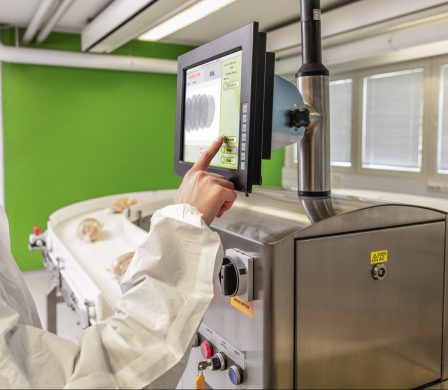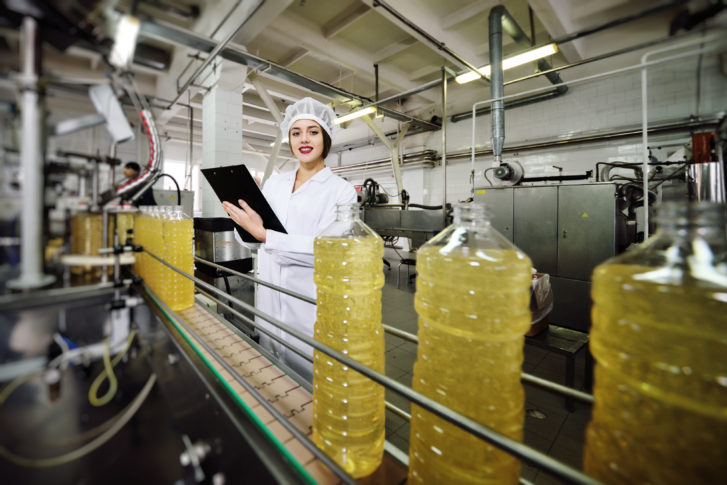
Choosing
the right X-ray system
according to your needs

Choosing the right X-ray inspection solution
When it comes to technical investments, the decision of the right solution can be difficult to make if there is no technical background or prior knowledge. On the previous blog post, we addressed the issue of production need determination in the process of choosing the right partner for inspection solution. On this blog post we continue that discussion by focusing on X-ray technology, since X-ray usually meets or even exceeds any quality inspection requirement while outperforming metal detectors and other technologies as critical control point especially on primary packaging lines.
X-ray technology may seem similar between different suppliers, but this blog post offers an easy-to-approach outlook of the important features to evaluate between them to find the most valuable option for your needs.
It is important that the chosen quality partner and X-ray provider is familiar with your industry and has a solution that creates long-term value for your business. Detection equipment is a competitive market with a lot of suppliers. Significant differences exist between the manufacturers in terms of detection capabilities, industry focus, product handling, user interfaces and service capabilities. In this blog post, we open these differences from the general point of view to address how they can be taken into account in the decision making in order to make a right decision of the partner or to evaluate the existing one.
Webinar: Introduction to Primary Packaging X-ray InspectionProduct handling in a major role of differentiating X-ray systems
The location of the X-ray in the production determines the system’s ability to inspect, detect, and reject hazardous foreign objects from the production and analyze the content of the packaged product. If food is contaminated by a foreign object, the system will detect the different density compared to a taught recipe and remove the product from the production flow with an automatic rejection system.
The primary packaging part is the ideal for the X-ray inspection. After the food products are packaged and sealed, they can no longer be contaminated by foreign objects without breaking the packaging material. This way, the contaminated food products can be detected with the highest accuracy from the steady production flow and finding even the smallest quality defects becomes much easier. The primary packaging inspection solutions require minimal space and are usually easy to install. In case of system malfunctions, the risk of downtime for the complete production or massive false rejects or unnecessary recalls is the lowest because the products are inspected individually instead of large quantities. Therefore, the primary packaging inspection is usually a financially smart solution and offers unique benefits in terms of performance and traceability.
The size, shape and weight of the products will also influence on the product handling. Sometimes it is useful to change the inspection angle or product orientation to improve the results, for example stand-up products that cannot lie on their side are usually inspected by lateral view and sometimes a multi-view X-ray is useful, if the package’s shape is complex. Flat belt is the most common system set-up, usually with a single view from the top or from the bottom crossing the conveyor belt.
For very light products, the lead curtains can be too heavy to allow an easy pass through and therefore the X-ray setup and protective curtains might need a modification. Very high production line speeds (over 400 product per minute) can be difficult to handle especially in terms of automatic rejection and these lines usually require customization or another inspection point with more suitable speed.
In some cases, the system should be able to ignore some of the package material to optimize the performance. This is called a masking feature which will ignore unnecessary objects (e.g., packaging shadows, promotional items) from the X-ray image to improve the results.
| Vertical Beam (top-down) | Horizontal beam (side shoot) | Dual/multiple beam | |
| flat products | Χ | Χ | |
| tall products | Χ | Χ | |
| complex products | Χ | Χ | Χ |
| smallest system size | Χ | ||
| lower x-ray power | Χ | Χ | |
| lowest operating costs | Χ |

Detection capabilities can limit the choices for inspection equipment
Based on the density variations, the X-ray is able to detect various foreign materials. X-ray equipment is usually used to detect materials and foreign objects with a higher density than water. The detection performance is affected by density, material thickness, and X-ray absorption coefficient of the material in question and numerous image processing algorithms are used to identify contaminants from the created grayscale image.
The different product characteristics require different X-ray powers and adaptability from the X-ray imaging. Too powerful X-ray consumes excess energy, and the X-ray images will not be accurate enough for low-density contaminant detection, whereas too low X-ray power might give incorrect results and reduced detection performance. More complicated applications use active contour algorithms to differentiate the package from food product. On high-speed applications, the processing time of complex algorithms should also be considered. In order to keep the results optimized, the X-ray system should be adaptable for these needs, and being able to do this cost-effectively requires an experienced partner to provide a solution with best value.
How to ensure an efficient detection?
- X-ray power and voltage: The voltage indicates the penetration force of the photons while amps define the image brightness
- Focal spot size (area where the X-rays are generated): influences the image sharpness together with the distance between generator, object, and detector
- Scan resolution: the higher the number of pixels, the better the resolution. Usually for food inspection, the pixel dimension should be in the range 0.4 to 1.2 mm
- Sufficient contrast: depends on the product thickness and can be adjusted by changing the kV and mA values of the generator
Ease-of-use with clear user interface
The X-ray technology should be easy to use by anyone: simple, efficient, and user-friendly. Too complex features and add-ons will slow down the production process by making the system heavy to use and increase the risk of mistakes. On the other hand, too simplified system would be impossible to setup according to your specific needs. For example, if there are variations in the production, the equipment’s user interface should allow more flexibility and ease the production batch changes without delaying the production.
Demonstrative videos


Continuous support to ensure operational functionality
Constant service support should be offered by the quality partner all the way from the begin of the investment process and need specification as well as during and after the X-ray implementation. At first, when considering the need for X-ray, it can be difficult to determine the desired technical characteristics of an X-ray system, so it’s a good idea to consult a specialist who can look at your complete situation, ask the important questions and assess the right solution for your needs.
Also, application/product testing should be done, so that both parties can evaluate the best placement for the control and be certain of the system’s realistic expectations to detect foreign objects and other quality defects and so that the capabilities are determined by mutual agreement with the quality partner. Sometimes, the system may require customization no matter if it’s for the rejection, specific detection software features or to enable a smooth product flow. It’s crucial that these custom requirements are recognized before acquiring the X-ray.
After the X-ray investment decision is made, the delivery, training, and setup should be offered by the quality partner, so that the implementation process is effortless and efficient making sure that every factory employee is familiar with using the systems safely.
Because the systems are advanced it can be challenging to utilize them to their full extent without regular maintenance from an X-ray engineer along the equipment’s lifetime. Also, the X-ray systems are often designed to be placed in steady factory conditions, therefore the importance of the preventive maintenance is higher when the production conditions have a tendency to vary a lot. That is why it is optimal to have support service available both in-person and online for the equipment.
Sometimes the X-ray requirements can change because of the evolving technology offers new possibilities or there are significant changes in production volumes or methods. Therefore, system updates and other value adding features should be available when such needs arise.
Application Testing as a Part of the HACCP ProjectService features to compare between quality partners:
- Customer service
- Application/product performance testing
- Training
- Support and maintenance
- Preventive maintenance
- Remote support
- Local support for the installation site
- Add-ons
- Turnkey solutions (infeed, product handling, reject, etc.)
- Connectivity to factory network and automation
- Future updates
- Warranty
- Total cost of ownership and value

Get more familiar with primary packaging inspection
Download our E-book and read more about the differences between primary and secondary packaging inspection and their operational and technological considerations such as contaminant detection rate, traceability and record-keeping, additional inspection features, and wasting, as well as system size and energy usage, equipment lifecycle, and false rejection rates.
The white paper explains the basics of food safety, talks about HACCP and the importance of established Critical Control Points. It highlights the importance of understanding where the CCP should be placed in order to achieve the most accurate inspection results.
